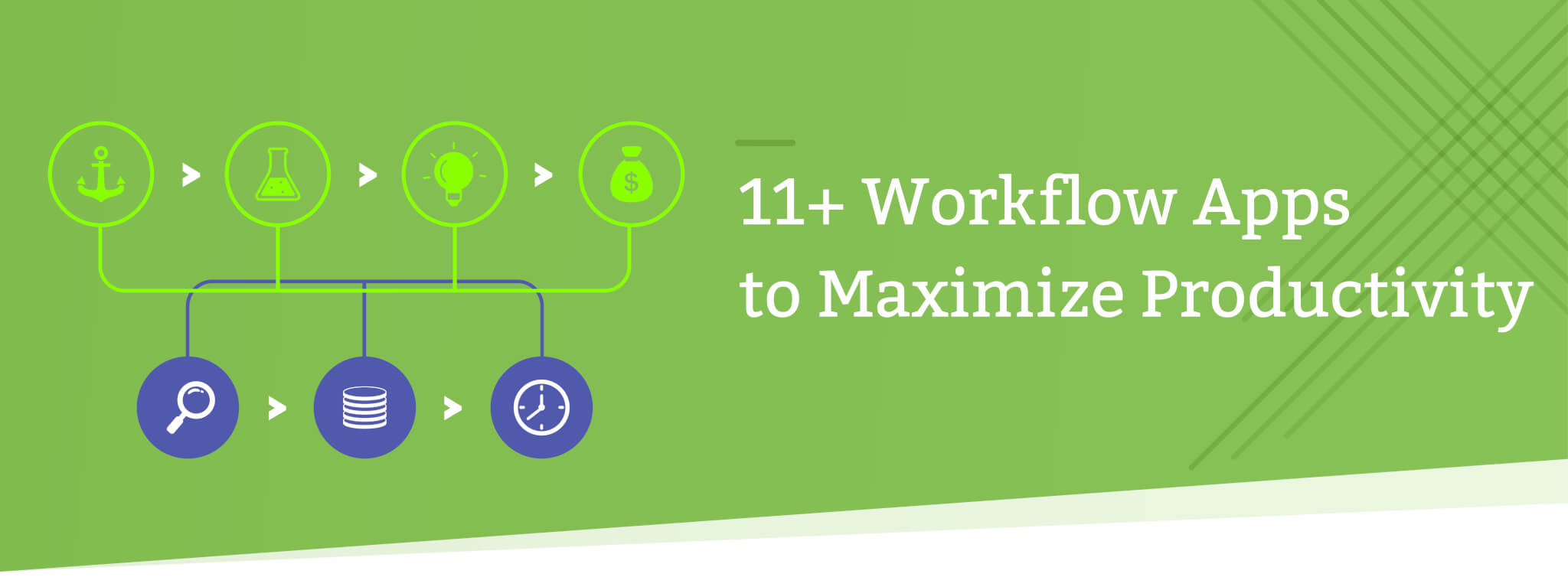
Every company has its own processes and workflows. Not every organization, however, gets the best out of them.
More often than not, your workflows aren’t nearly as efficient as they could be.
That’s where workflow apps come in – they’re the type of software that helps make your processes run better.
The apps are all used in different ways, but all have the same end-goal: to make your workflows as efficient as possible.
Some help with managing processes directly. Others can be used to facilitate workflows, automate certain process steps, etc. We’re going to cover workflow apps that help with 5 separate functions…
Workflow and Process Management – Tools that help manage your processes, all the way from documentation to execution.
Process Automation – Whatever your business is about, you probably end up doing menial tasks every once in a while. These tools help automate all the grunt work, allowing your employees to focus on what’s important.
Task Management – For your workflows to be efficient, everyone should be aware of what their responsibilities are. Otherwise, your workplace will be extremely chaotic. These tools make everyone’s tasks, to-dos and deadlines clear.
Communication – Things don’t often go as planned – and that’s only normal. While you can’t always avoid disaster, you have to be able to communicate problems fast (and hint: email doesn’t really help). These tools make communication within your organization faster and easier.
Outsourcing – In some cases, there are steps in your workflows that can be done by just about anyone. Think, grunt work (that can’t be automated). Or sometimes, you’ll encounter tasks that fall outside your current employee skill sets. To make sure this kind of stuff isn’t a roadblock for your workflows, you can outsource certain parts of your processes.
Workflow and Process Management
To err is human. This is especially true when it comes to procedures.
Even if you’ve been doing something for years, there’s still a chance that you’ll let a mistake or two slip by.
There are, however, 2 ways to minimize risks and maximize process output …
Workflow Software – a centralized hub for all your processes. You can keep track of all your workflows in one place, and come up with improvements using inbuilt analytics. On the other hand, your employees get a step-by-step manual on completing any given process.
Online Chart Generator – Mapping your processes is also an option. You can use one of the many online chart tools to visualize a process, and from then on figure out how to improve it.
Tallyfy
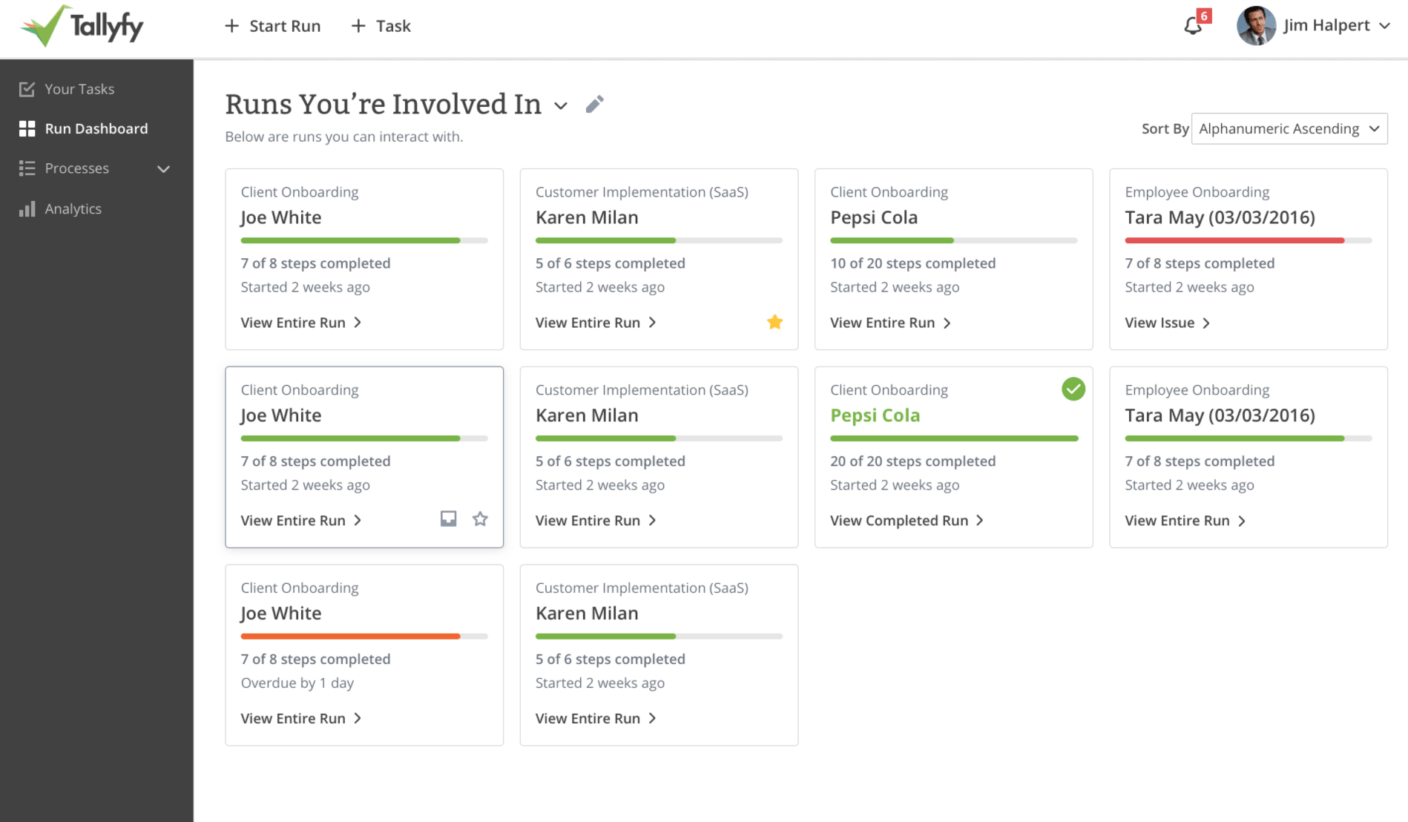
To get the most out of your workflows, you’d want to use process management software.
Tallyfy allows you to manage all of your processes from one centralized hub. You have the management POV, where you create and monitor procedures. You can see which processes are going according to the plan, as well as the ones that have bottlenecks.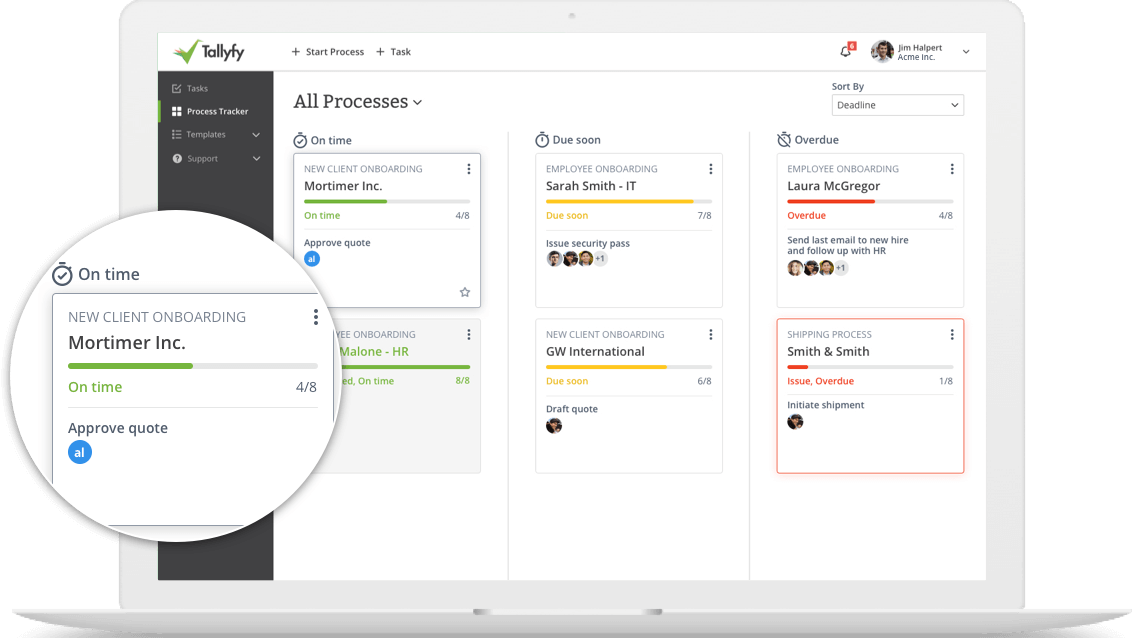
On the other hand, there’s a task-based dashboard for all of your employees, putting all the to-dos in one place prioritized by urgency.
LucidChart
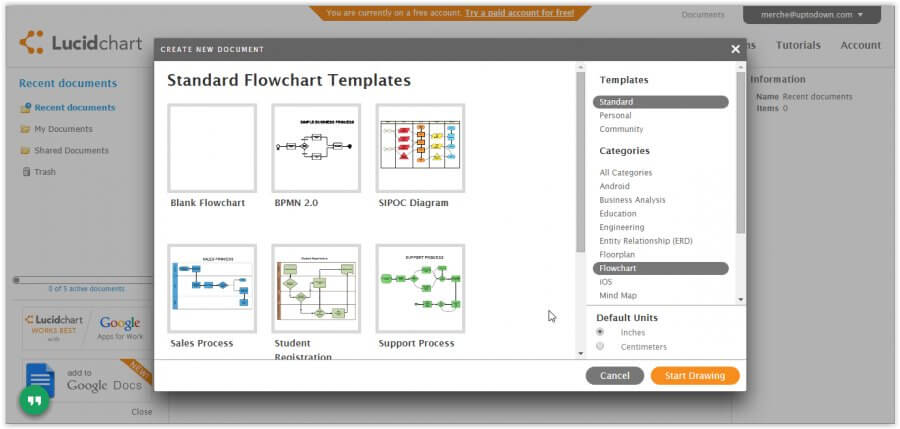
Sometimes, you can make your workflows efficient by streamlining them. That is, you find costly, time-consuming steps within a process and optimize them.
To do this, you need to create a workflow diagram & map out all the steps needed to carry out for process competition. This is, more often than not, done using a process flowchart.
One of the easiest ways to create a workflow diagram is by using an online charts tool such as LucidCharts.
You can pick from different types of charts (flowchart, SIPOC, etc.) and map out any given process.
Process Automation
Automating business processes can be very helpful for any organization. You’re taking out any irrelevant grunt work and letting the software handle it instead.
On one hand, your employees will be able to focus on work that really contributes to the company goals. On the other, you’ll be raising morale – no one wants to spend hours doing something that a machine could be doing.
These tools help automate process steps, or in some rare cases, entire processes.
Zapier

Zapier is THE most popular automation tool out there. It helps integrate different third-party apps & automates any workflow that needs coordination between different tools.
You could, for example, zap together Intercom and Slack. Whenever a customer sends you a message through Intercom, you’d get a direct message on Slack to make sure you reply ASAP.
Or, you could zap your lead generation website & Mailchimp, transferring any website signup to your email list directly.
The possibilities are just about endless. Whatever you’re trying to automate, Zapier could probably help.
For a complete list of possible Zaps, you can check out this guide.
Buffer
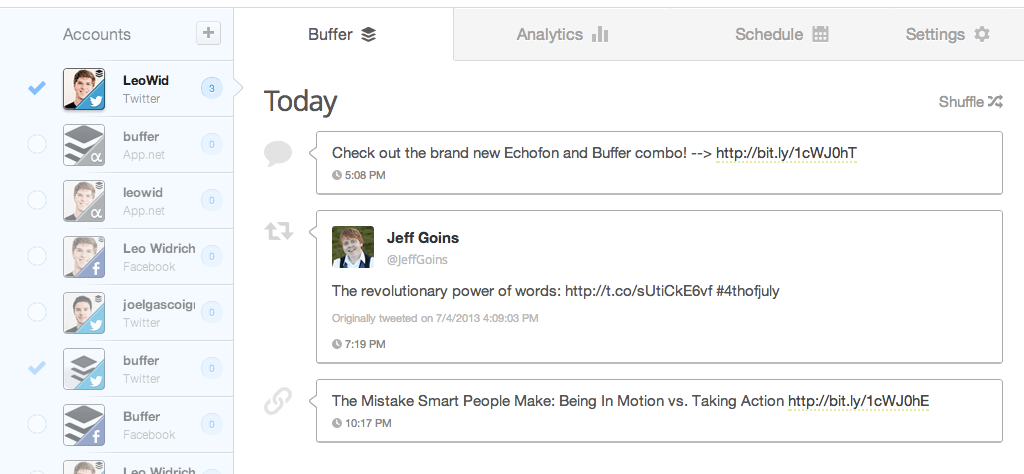
Updating social media profiles is, more or less, a very menial job. You have to sit down 2-3 times a day and come up with the right post.
With Buffer, you can completely automate the entire process. Rather than doing it on a daily basis, you can schedule your entire social media activity in advance. This can be weeks, months, or even a year – it’s completely up to you.
As a given, you’d still need to share any new content you would publish in real-time, but that’s nothing compared to operational social media work.
LastPass
These days, every organization has dozens of online accounts: email, website, payments provider, software, etc.
Over time, this really adds up, making it pretty hard to find the right account credentials for any given app. This can be both annoying and time-consuming since you might have to do it several times a day.
Apps such as LastPass put all of your account credentials in their database. All you have to do is register & the software will take care of all the logins for you.
This can save both you and your employees a lot of time. The software is, additionally, very secure. It uses the 256-bit AES encryption, making it impossible to crack with any of the world’s available technology.
And since the encryption happens on your own computer, even the employees at LastPass can’t access your data.
Task Management
Without task management software, there’s always a big risk of your employees messing up their responsibilities.
And that’s not really their fault – they have all sorts of things to do. Every once in a while, something can just slip by you. This can either be completely harmless, or very disastrous.
Task management software keeps track of all the to-dos, responsibilities and deadlines.
Basecamp
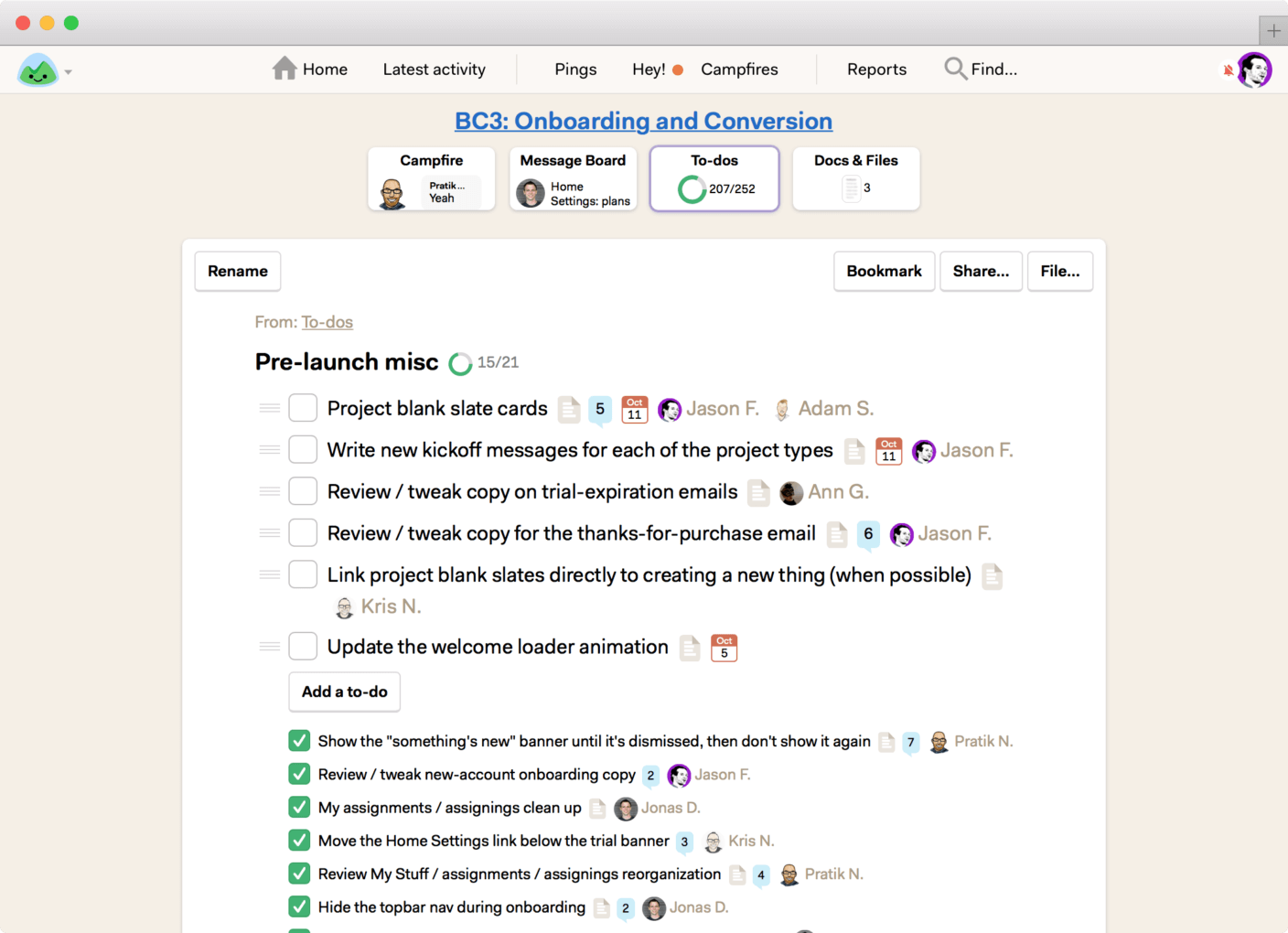
Basecamp is a web-based project management software. It helps make the “who, when, and what” aspects of your workflows clearer for both the employees and the management.
You can create different “boards” for either each business function (marketing) or project (software dev. for client X). Each board consists of different “lists,” which is essentially a category of tasks.
From an employee’s point of you, you get a centralized list of all the tasks you need to do, as well as their deadlines.
As a manager, on the other hand, you can see exactly what’s going on within your organization. If anyone needs help with something if there are any issues or bottlenecks, etc.
Trello
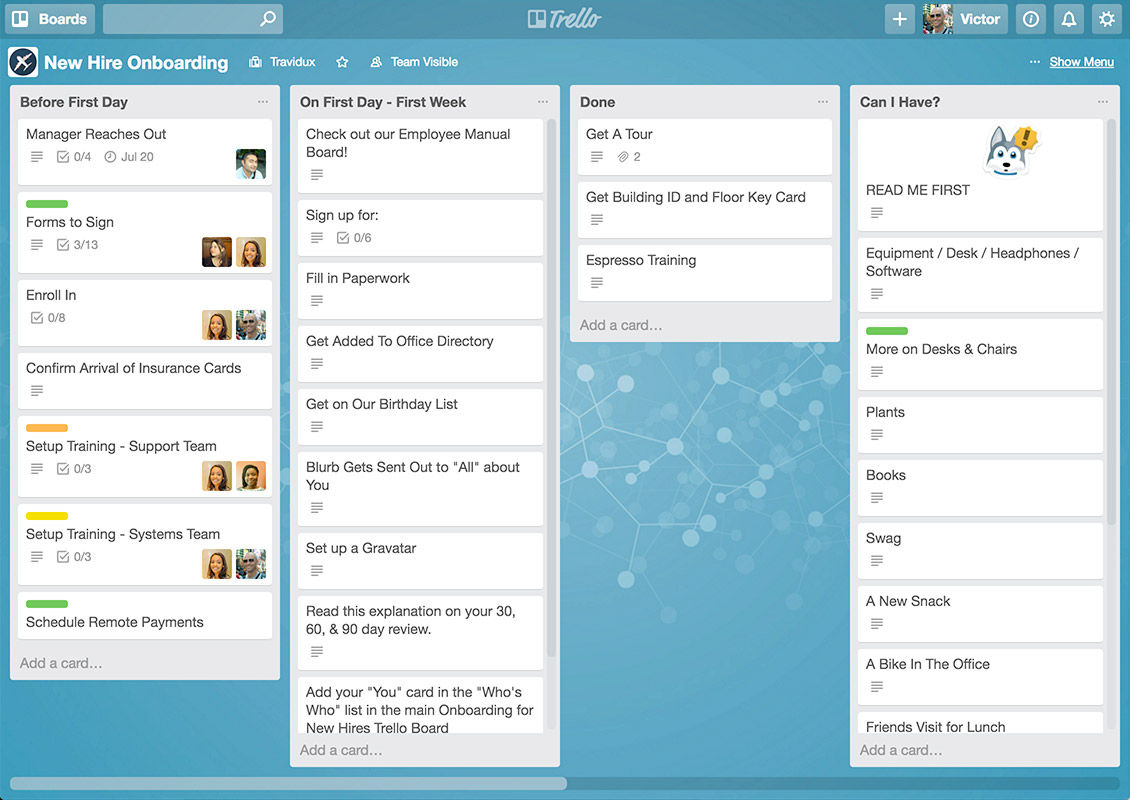
You move any given task through different stages – to-do, in progress, done.
You can also use it in different ways, depending on your needs. For example, it can double as a sales tool. You take a client through different stages: lead, contacted, pitched, etc.
Communication
Successful communication is key for any business to be successful. Email, however, isn’t always the best thing.
Emails can get lost, forgotten, and overlooked. Even it’s something super urgent, there’s always a chance that it won’t be seen in time.
With the right tools, you can streamline your communication workflows.
Slack
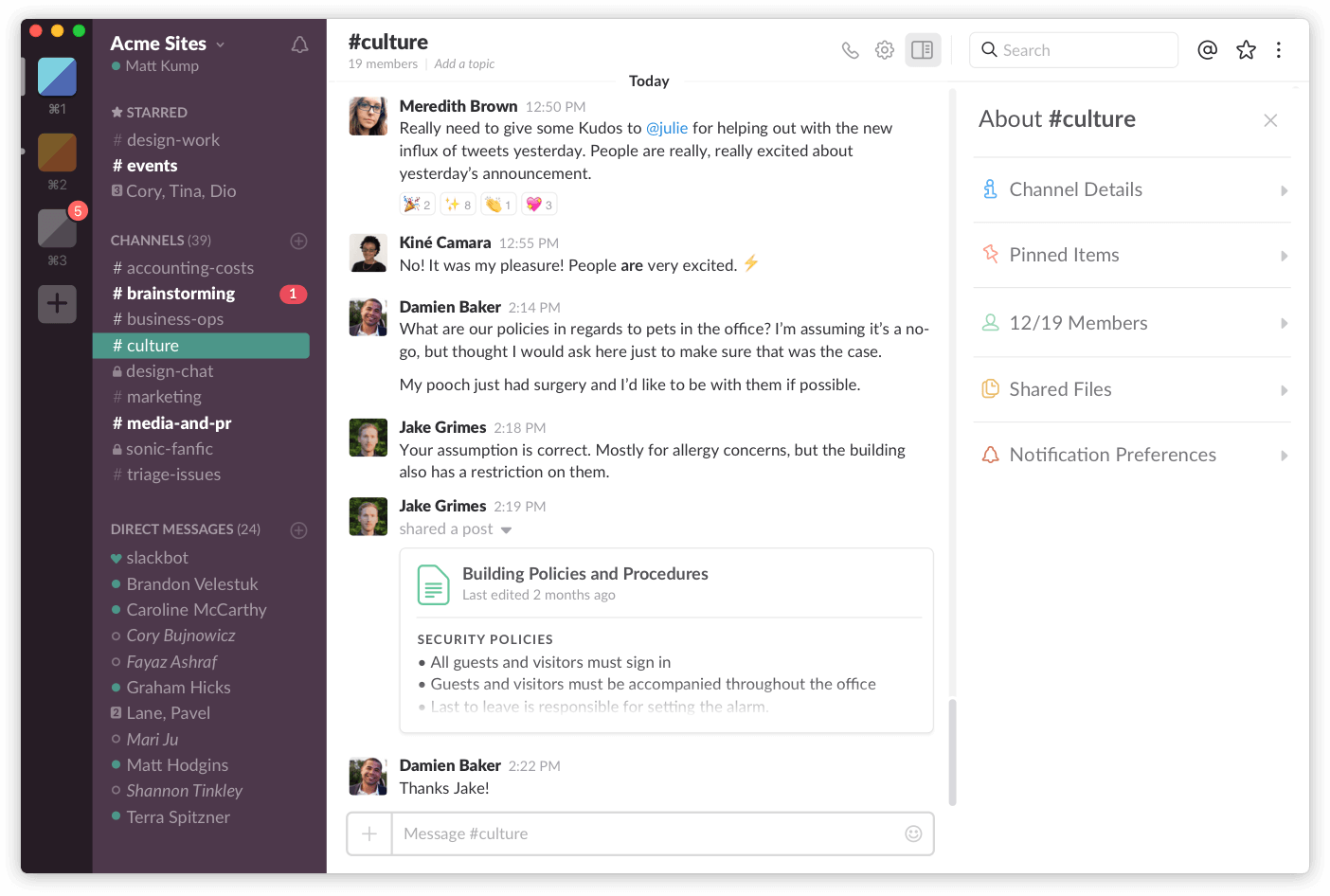
If you haven’t heard of Slack, then we have a really nice treat for you.
Slack is the best communication tool on the market, mainly due to its amazing User Experience and User Interface. It can be used by just about anyone without any special training.
The workflow tool takes your organizational communication from Email to Direct Messaging. This is, of course, significantly faster.
To add icing on the cake, Slack also comes with a lot of integrations with most of your favorite apps. In fact, it can go with just about every tool we’ve mentioned in this list.
Newton
While you can replace email for internal communication, it’s still an essential tool for dealing with anyone outside the company.
While working with clients, for example, you can’t just hit them up on Slack whenever you feel like it. Most email tools today, however, are weak in terms of functionality.
And that’s where Newton comes in. It supercharges your email software, allowing for all sorts of cool features.
For example, it allows for read receipts. This lets you know when, where, and who reads your emails.
It also lets you schedule your emails. This is especially useful for working with clients in different time zones. No one wants to be woken up by an email notification at 3 AM.
Outsourcing
These days, it’s very rare for a business not to take (at least some) advantage of outsourcing. You could, for example, free up your team’s time by outsourcing grunt work.
Or, you could be filling up weaknesses by getting the right consultant for any given function.
Whichever the case is, these workflow apps can help.
UpWork
Upwork is the go-to portal for hiring outsourced help. It houses countless freelancers from all industries and locations, for just about any price range.
You can pick whichever industry you need help with, post a job ad, and get tons of proposals from freelancers worldwide.
TopTal
If you’re specifically looking for top-tier talent, then you might want to check out TopTal instead.
While UpWork can sometimes be a hit or miss, you can rarely go wrong with TopTal. The freelancers there are the best of the best – top 3% in any given field.
The company has very strict a vetting procedure, letting only the best of the best to register.
As a given, this means that TopTal freelancers are going to be relatively more expensive than that of any other website. The quality, however, definitely makes up for the cost.
TimeDoctor
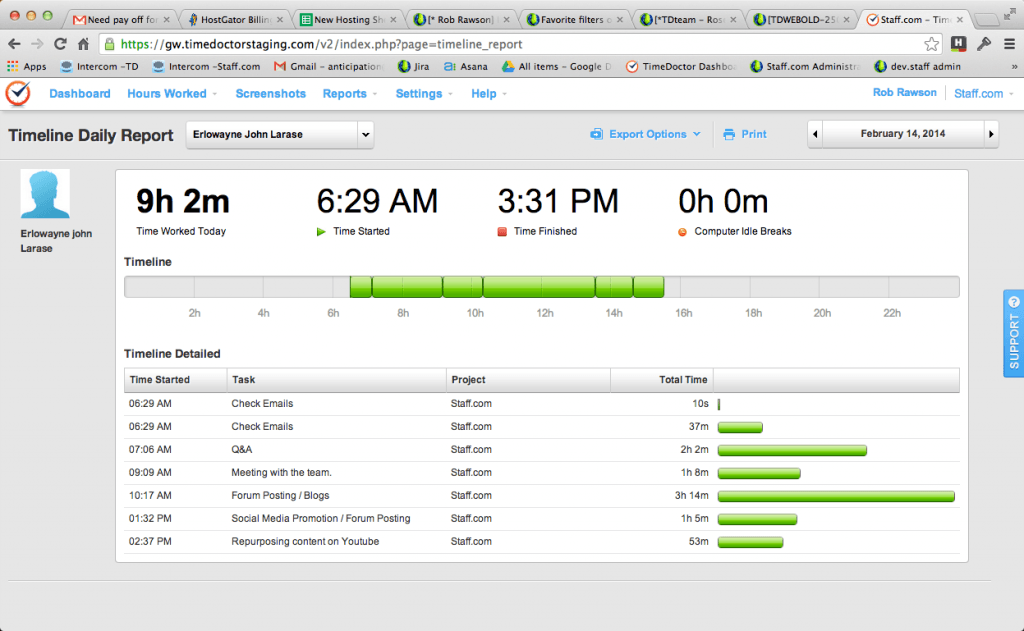
Managing freelancers or remote employees is a bit different than with your average office workers.
In an office, you can always look at what your employees are up to. Online, you can’t really be sure.
TimeDoctor is a one-stop-shop solution for managing remote or freelance employees. It lets you track their time (with screenshots for proof-of-work), allowing for accurate payment.
In addition, it helps handle payroll, track meetings, create reports, and a bunch of other functionalities.
Conclusion
Now that you know about all sorts of different workflow apps, it’s time to put them into practice.
Pick the ones that seem right for your business & watch your productivity go through the roof.
After you’ve gotten some results, do let us know how it went in the comments! Which workflow apps did you use? What were the results? Are there any of your favorite tools we missed out on?
Related Questions
What is a workflow application?
A workflow application is a digital application that assists you with tracking, mapping out and management of repeated tasks or processes. Think of it as a smart guide that takes work from beginning to end and ensures nothing slips through the cracks. Unlike simple to-do lists, workflow apps tie your tasks together, automate repetitive chores and display where everything stands, in real time, at any given time. Also read : What is workflow?
What program can I use to create a workflow?
A number of easy-to-use tools are available for developing workflows. Tallyfy is best for simplification and customization, allowing you to create workflows with no technical background required. Other favourite options are Trello for simple visual workflows, or Microsoft Power Automate for users with a bit of technical know-how. The key is choosing a tool that parallels how your team operates — some people are drawn to visual flowcharts and others prefer checklist-style workflows.
What is the best workflow management software?
Workflow software is a tool for organizations that need to manage multistep processes, such as applying for a job, onboarding a new hire or getting a product to market. The best workflow software for you will depend on what exactly you’re trying to accomplish, but the best solutions will have some things in common — they’re easy to use, can be tailored to various processes, and support real-time tracking. Mostly strong in companies who want to simplify their processes and move from spreadsheets to a tool that is easy to use. The beauty of it is that it’s suitable for simple and complex workflows yet it’s extremely easy to use.
What are the 3 basic components of workflow?
There are three core elements to a workflow: Input (an initiator: the catalyst, project or trigger), Work (the process: the time, the processes, and the to-dos), Output (a deliverable: the end result). For example, in a customer-support process, the input might be a support ticket, the transformation means solving the customer’s issue, and the output could be the fixed issue and happy customer.
Who uses Workflow Apps?
Everyone in today’s businesses—from small business owners to large enterprise teams—uses workflow apps. Average users are project managers who want to keep track of deliverables, HR who want to manage hiring, customer support who manage support tickets and operations people who coordinate complex processes. Freelancers and solopreneurs even use workflow apps to stay organized and nimble.
How do workflow apps improve productivity?
Workflow apps increase productivity by removing manual handoffs, reducing errors and preventing things from getting forgotten. They automatically alert the right people at the right time, lend clear visibility into bottlenecks, and aggregate data that allows teams to become more efficient over time. This automation can free up hours of work every week that would otherwise be devoted to status updates and coordination.
Can workflow apps integrate with other software?
Most modern workflow apps integrate with other business tools. They can sync with email, calendar apps, a document storage place and a communication platform. And because of that connectivity, you can automatically generate tasks from emails, update spreadsheets when processes wind up, or send messages in Slack when someone needs to take some action.
How secure are workflow apps?
The best workflow apps take security seriously, with support for encryption, access controls, and regular security audits. These products will often have features such as single sign-on (SSO), role-based permissions, or audit trails. If you deal with sensitive information, you’ll want one that falls under relevant standards (like GDPR or SOC 2).
What’s the difference between workflow apps and project management tools?
While there is crossover, workflow apps target repeatable processes while project management tools manage unique, once-off endeavors. Workflow apps are well-suited for standardizing routine work, while project management tools are better for planning and tracking progress on specific projects with a finite end date. Many groups employ both binaries and manifestos for different ends.
How do you measure the success of a workflow app?
Success can be quantified a number of ways: less time to complete tasks, less errors and omissions, happier customers and higher employee engagement. The top workflow apps even include analytics to showcase these improvements as they happen, giving teams clear sight lines for where they work most efficiently.

